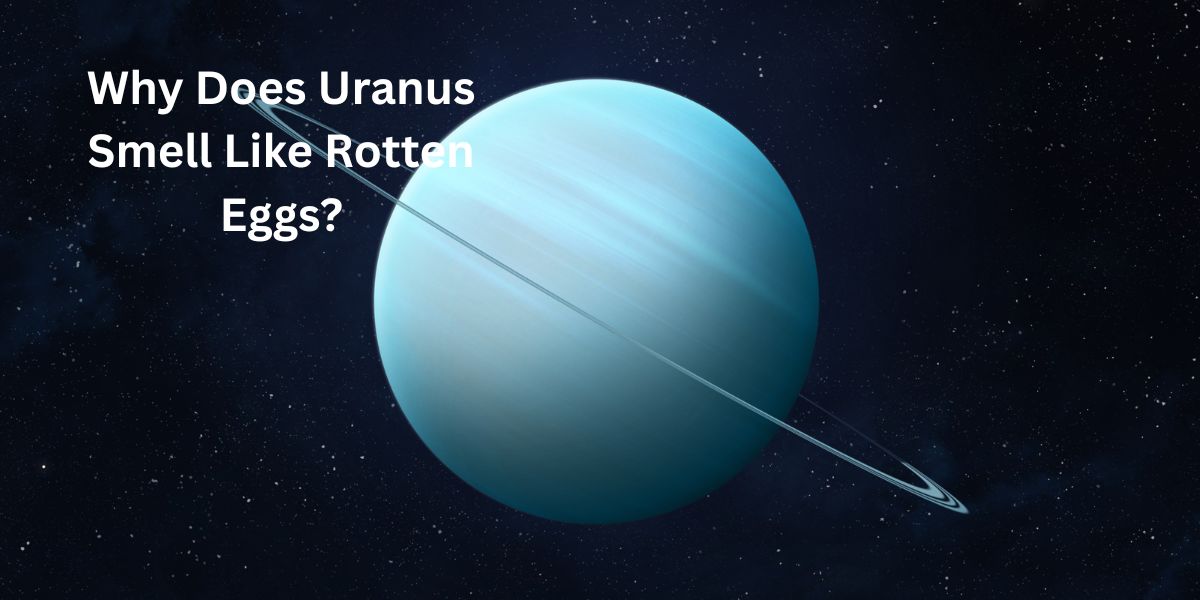Have you ever wondered what planets smell like? Earth has fresh air, flowers, and rain. But what about other planets? Scientists say Uranus has a very strange smell—like rotten eggs!
How do we know what a planet smells like if no one has been there? The answer comes from telescopes and space probes. They study the gases in Uranus’s atmosphere. And guess what? One of those gases is the same as the smell of rotten eggs!
But why does Uranus have this stinky smell? Let’s find out!
What Gas Makes Uranus Smell Like Rotten Eggs?
The rotten egg smell comes from a gas called hydrogen sulfide (H₂S). This gas is also found on Earth. When eggs go bad, they release hydrogen sulfide. That’s why rotten eggs smell so terrible!
Uranus’s clouds are full of this gas. Scientists discovered it using special tools that analyze light. Different gases absorb light in different ways. When they studied Uranus, they found the “fingerprint” of hydrogen sulfide.
Fun Fact:
- Hydrogen sulfide is also found in volcanoes and swamps.
- Even a little bit of this gas has a very strong smell.
Why Does Uranus Have So Much Hydrogen Sulfide?
Uranus is made mostly of hydrogen and helium, like Jupiter and Saturn. But unlike those planets, Uranus has more ices—water, ammonia, and methane. These ices mix with sulfur to create hydrogen sulfide.
Another reason is Uranus’s distance from the Sun. It’s very far away, so it’s extremely cold. This keeps the gas trapped in its atmosphere instead of escaping into space.
Comparison:
- Jupiter and Saturn smell more like ammonia (like strong cleaning products).
- Uranus smells worse because of the extra sulfur!
Can Humans Smell Uranus’s Atmosphere?
No, humans cannot smell Uranus directly. The planet is too far away, and its atmosphere is deadly. But if you could get close (without getting crushed or frozen), the smell would be unbearable!
Scientists use spectroscopy (a way to study light) to detect gases. They don’t need to “sniff” the planet to know what it smells like.
Imagine This:
If you opened a bottle of Uranus’s air, the smell would hit you instantly—like a million rotten eggs!
Do Other Planets Have Strange Smells?
Yes! Every planet has a different smell based on its gases.
- Venus smells like rotten eggs too (because of sulfur dioxide).
- Mars smells like gunpowder or a struck match (because of sulfur and iron).
- Jupiter & Saturn smell like ammonia and bad perfume.
- Neptune might smell similar to Uranus—stinky and sulfur-like.
Fun Fact:
If you could stand on Jupiter, the air would smell like a mix of cleaning products and burning metal!
Could Uranus’s Smell Ever Reach Earth?
No, Uranus’s smell will never reach Earth. The planet is 1.8 billion miles away! Even if the gas escaped, space has no air to carry smells.
But if a comet or asteroid hit Uranus and sent gas flying, it would take thousands of years to reach us. By then, the gas would disappear in space.
Good News:
We don’t have to worry about space smelling bad—Earth’s air is safe and fresh!
Conclusion
Uranus smells like rotten eggs because of hydrogen sulfide in its clouds. This gas is also found on Earth in volcanoes and spoiled food. Unlike Jupiter and Saturn, Uranus has more sulfur, making its smell extra strong.
Why is Uranus so stinky?
Uranus has a gas called hydrogen sulfide, which smells like rotten eggs. This gas is common in its clouds.
Can you breathe on Uranus?
No, Uranus has no oxygen. Its air is mostly hydrogen, helium, and methane—all deadly to humans.
What does space smell like?
Space itself has no smell because there’s no air. But astronauts say spaceships smell like burnt metal or gunpowder.
Does Neptune smell like Uranus?
Probably! Neptune also has hydrogen sulfide, so it might smell just as bad.
What is the smelliest planet?
Uranus and Venus are the worst because of their sulfur gases.
How do scientists know what planets smell like?
They use telescopes to study gases in a planet’s atmosphere. Each gas has a unique light signature.
Could Uranus explode because of its gases?
No, the gases are stable. Planets don’t explode like bombs.
What would happen if you stood on Uranus?
You’d freeze, get crushed by pressure, and suffocate—all while smelling rotten eggs!
Is Uranus the only planet with hydrogen sulfide?
No, Venus and Neptune also have it, but Uranus has a lot.
Can we remove the bad smell from Uranus?
No, and we don’t need to! The smell is natural and doesn’t affect Earth.
